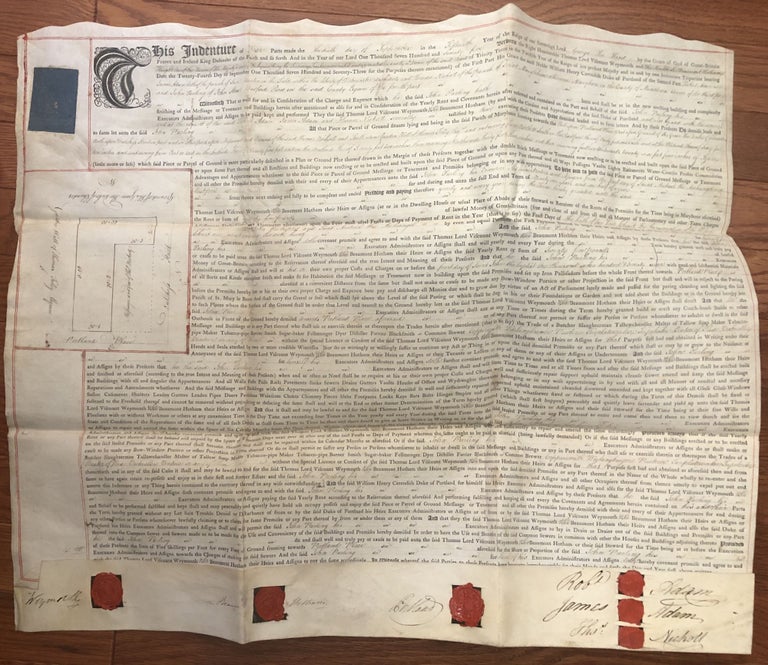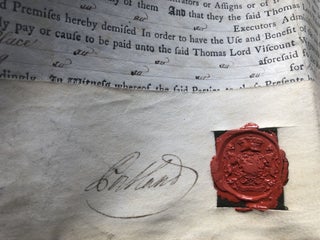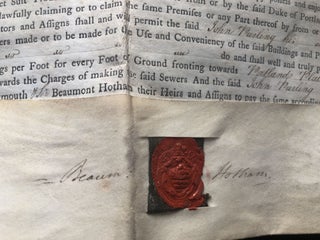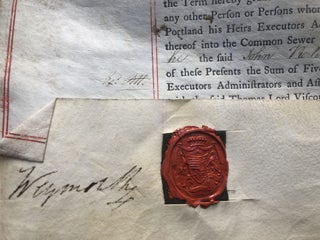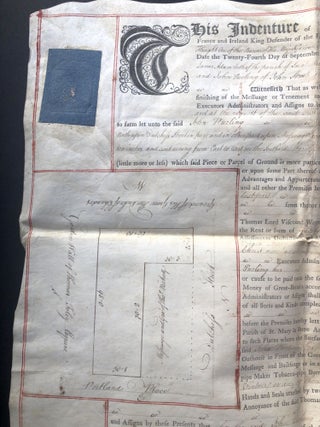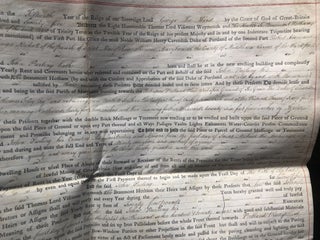1775 rental agreement for property at Portland Place, London, signed by the architects and builder, et al.
Parchment, 24 x 20 inches, very good, usual folds, boldly signed by architects Robert and James Adam, the builder Thomas Nicholl, and additionally signed by the owners Beaumont Hotham, 2nd Baron Hotham, Thomas Thynne, 1st Marquess of Bath, and William Cavendish-Bentinck, 3rd Duke of Portland, who was twice Prime Minister of Great Britain. Premises were leased to John Purling, a slave owner and slave trader of St. Vincent. Purling himself was Chairman of the East India Co. 1771-1772 and MP for New Shoreham, East Looe and Weymouth and Melcombe Regis between 1770 and 1790. In his will of Portland Place from 1800, he left 12,000 Pounds in trust for his niece Margaret Clements: his real estate, including interests in unspecified estates and enslaved people on St Vincent, were left in trust for his nephew George Purling. There is a small surveyed drawing inset of the premises under contract, which was part of Portland Place, a street that was laid out by the brothers Robert and James Adam for the Duke of Portland in the 1770s and originally ran north from the gardens of a detached mansion called Foley House. It was said that the exceptional width of the street was conditioned by the Duke's obligation to his tenant, Lord Foley, that his views to the north would not be obscured. The street still contains many of the capacious Georgian houses designed and built by the Adam family and is considered one of their most significant and lasting achievements. The last time a document signed by the Adam brothers came up for auction was 1987, at a Phillips auction, where an assignment of lease from 1774 signed by three Adam brothers sold for 380 Pounds. Robert Adam was the most important English architect of the late 18th century. Very Good. Item #H19204
Price: $1,750.00

